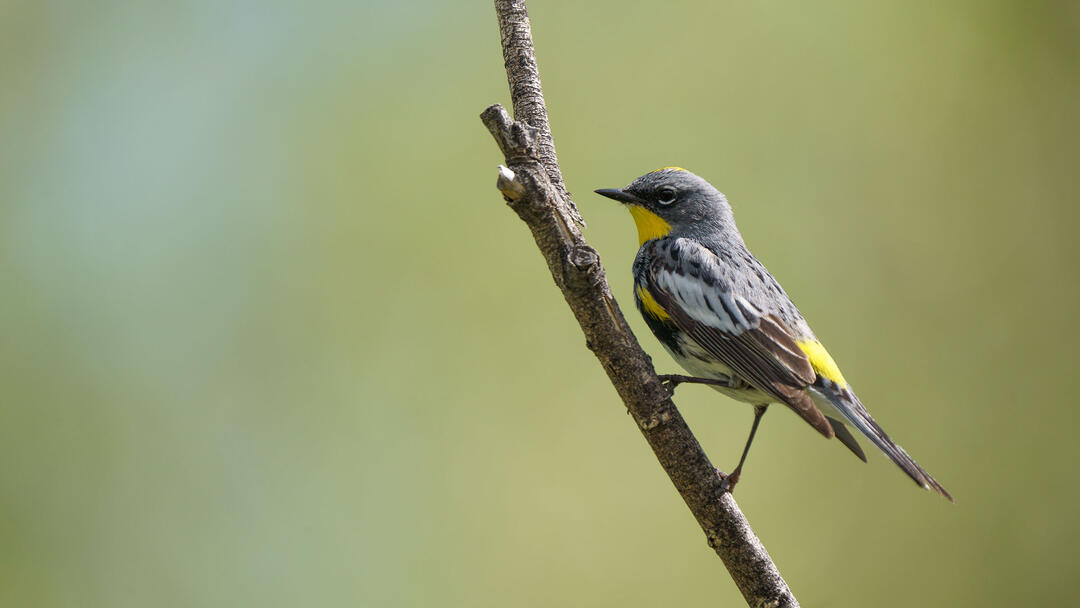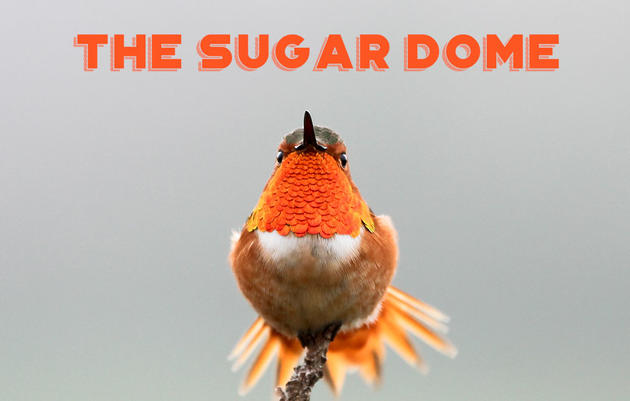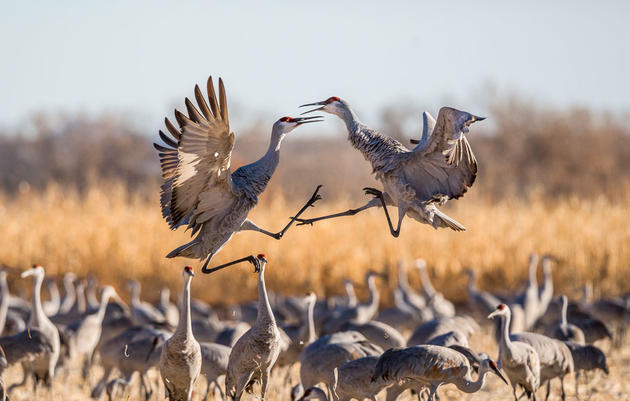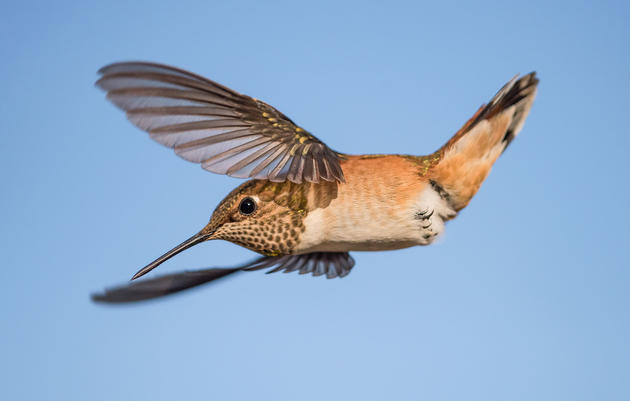This post was originally published by Zach Hutchinson on Flockingaround.com.
Let me start by saying: I do not care how you record your birds in your field notes or eBird. You can call the birds in this post whatever you choose, but... if you want to try to improve your data records and ID skills, this may help you. If this post does not help you, don't blame me! I just type words and provide photos.
The History of the Yellow-rumped Warbler
The Myrtle Warbler and Audubon's Warbler were previously considered two species. If you did not know that, you might have been born after 1973 (raises hand). The two "species" were lumped into the "Yellow-rumped Warbler." Some people, such as Kenn Kaufman, hated this move by the AOS (previously AOU). Kaufman called the Yellow-rumped Warbler-name "bland" and "unflattering." I say this to Kenn Kaufman: any bird that has "rump" in its name has a great bird name! Without "yellow-rumped," we might not have the affectionate nickname "Butterbutt." And certainly, it is a much better name than a bird being described using a surname like Cassin's, Baird's, or some other flowery tart (that is me throwing shade at the Duke of Rivoli - long live the Magnificent Hummingbird).

Everyone calm down. We can agree this is an amazing bird, with striking features. Now, back to the serious information. Well, serious-ish.
The Yellow-rumped Warbler (YRWA) is one species according to current* taxonomy. However, it is still split into four subspecies, with two of those subspecies being common in the US and Canada: coronata (Myrtle) and auduboni (Audubon's). For this post, we will only use the common English subspecies names.
The two subspecies that are the topic of this post, Audubon’s Yellow-rumped Warbler and Myrtle Yellow-rumped Warbler, can breed together to create an intergrade. Fun fact, an intergrade is not the same as a hybrid. The difference? An intergrade is the product of two subspecies or subspecies groups, and a hybrid is the product of two species. Confused? Do not fear! Most of this post is images.
Let's do a quick recap:
1972: Audubon's Warbler and Myrtle Warbler
1973: Yellow-rumped Warbler with 2 groups: Audubon's Yellow-rumped Warbler and Myrtle Yellow-rumped Warbler
1989: I was born. Not really an important part of this timeline...
2016: Kenn Kaufman insults Yellow-rumped Warbler (Kenn has a sense of humor, right?)
2017: RIP Magnificent Hummingbird, flowery tarts get birds named after them
2019: I am writing this article
Identification of the Yellow-rumped Warbler Subspecies
We will start with basic tips for the two common subspecies. I focus on males on this post, as they are much easier to ID in the field. Females are generally duller and have more buffy/brown/gray than males.
Yellow-rumped Warbler (Audubon's)
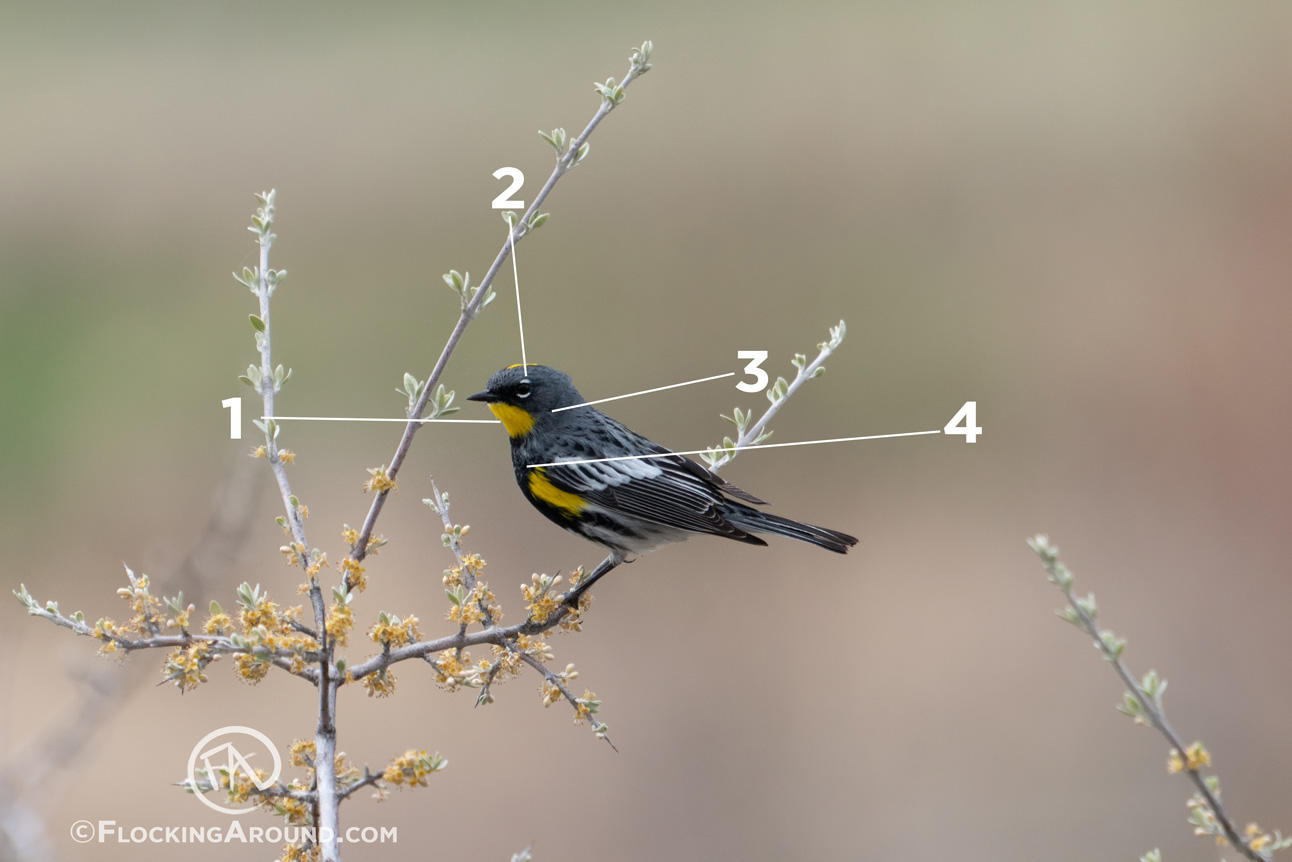
1. Yellow throat, does not extend to auriculars - (MYWA: white throat and extends to under auriculars)
2. White eye-arcs only - (MYWA: a white supraloral spot and white supercilium stripe)
3. Blue to slatey-blue auriculars and "under-auriculars" - (MYWA: black to slatey-black auriculars with a white or white-ish "under-auricular)
4. Solid to mostly-solid black chest (MYWA: distinct bold streaks)
Yellow-rumped Warbler (Myrtle)

1. White throat that extends to under auriculars (AUWA: yellow throat, does not extend to auriculars)
2. White eye-arcs with a white supraloral spot and white supercilium stripe (AUWA: white eye-arcs only)
3. Black to slatey-black auriculars with a white or white-ish "under-auricular (AUWA: blue to slatey-blue auriculars and "under-auriculars")
4. Distinct bold streaks (AUWA: solid to mostly-solid black chest)
Yellow-rumped Warbler Intergrades
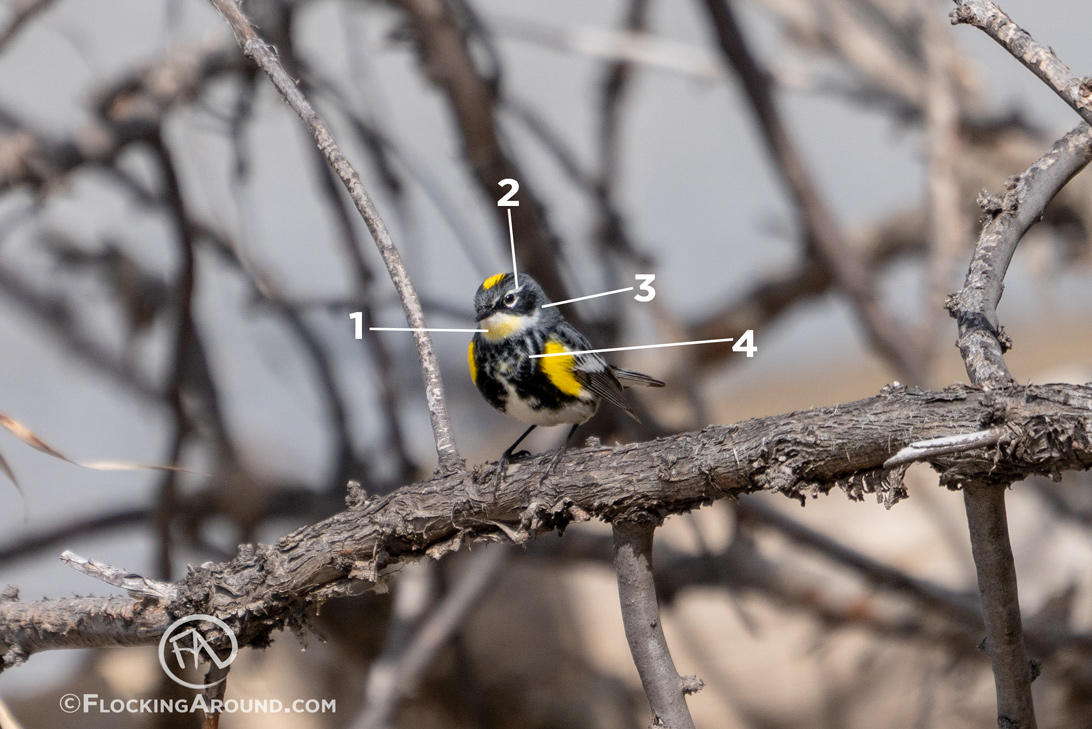
1. A white throat with yellow centralized OR a yellow throat with white-edging (occasionally yellow is faint to nonexistent)
2. Obvious white supraloral spot or supercilium OR very faint to non-existent supraloral spot or supercilium
3. Black to blackish auriculars with white to whiteish "under-auriculars"
4. Bold chest streaks OR solid black OR combination
No single trait can guarantee an intergrade. Attempt to use a combination of traits to identify the bird in question. Remember, this post focuses on males; females add new elements to this discussion, that this post does not have time to contribute to.
Yellow-rumped Warbler Range Maps
The range maps below will not provide a foolproof method for Yellow-rumped Warbler subspecies identification. Instead, they are another piece of the identification puzzle that can help to support your ID's.
Audubon's Yellow-rumped Warbler Range Map
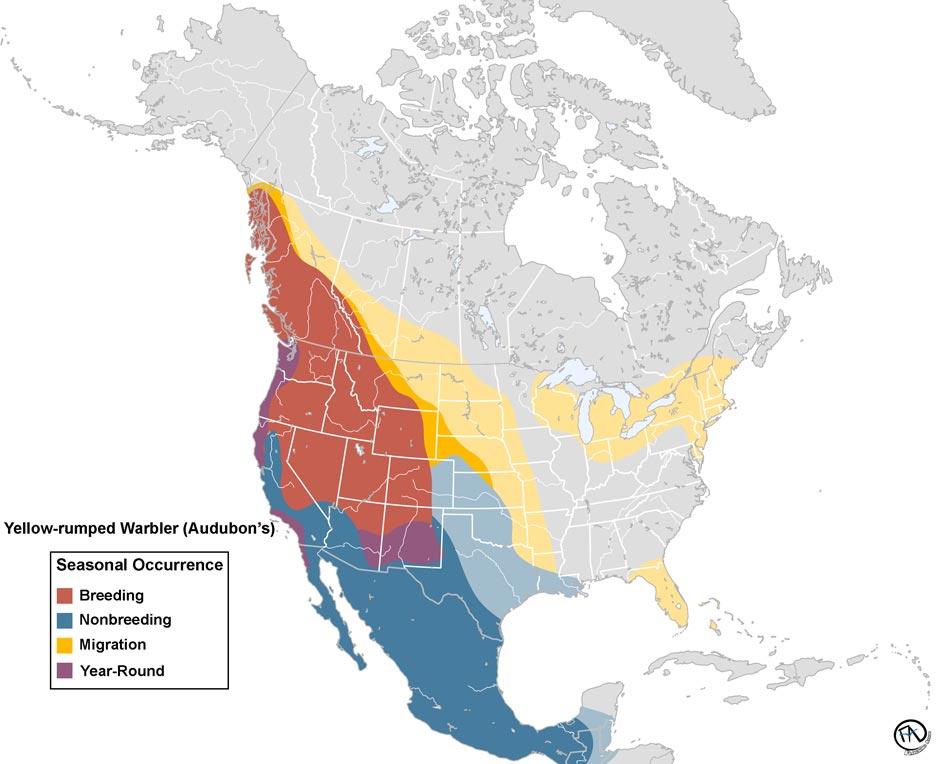
Myrtle Yellow-rumped Warbler Range Map
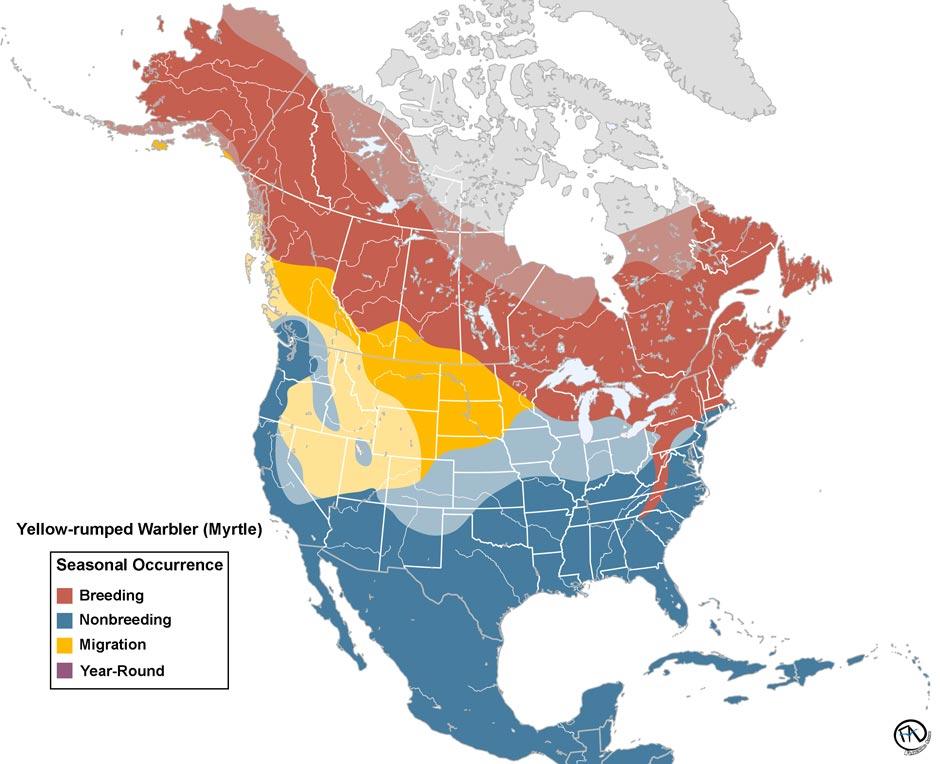
Yellow-rumped Warbler Intergrade Range Map
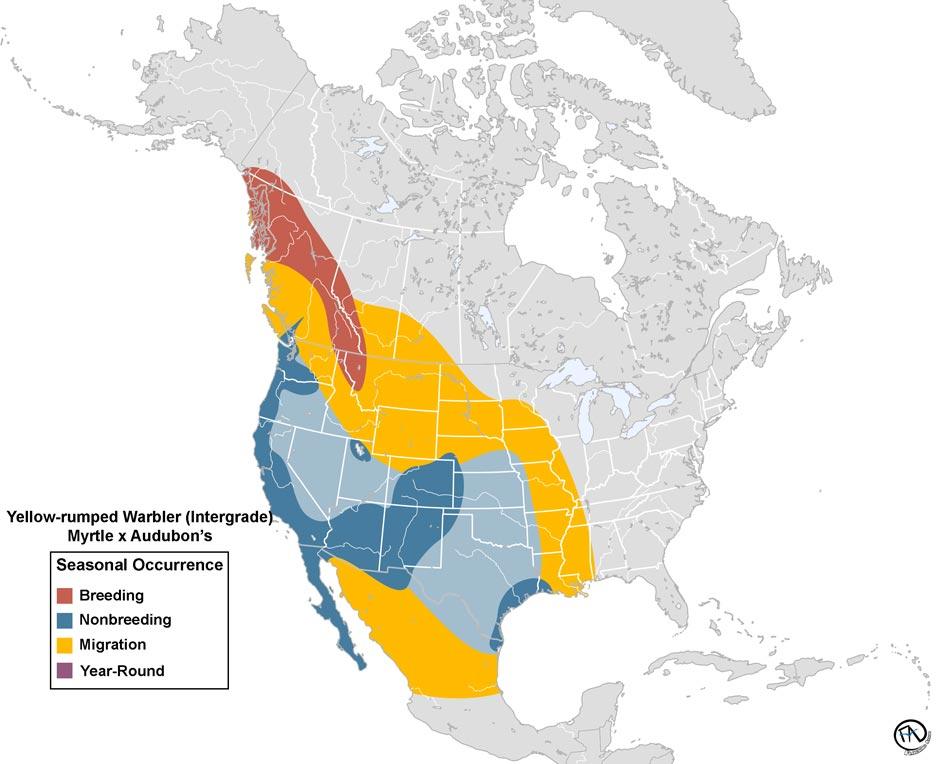
Yellow-rumped Warbler Quiz
Decide if each pictured bird is an AUWA, MYWA, intergrade, or cannot be determined and must be called a YRWA. Never be afraid to use YRWA. Not every bird can be identified down to subspecific levels.
All answers will be at the bottom of this post. HINT: Use your numbers!
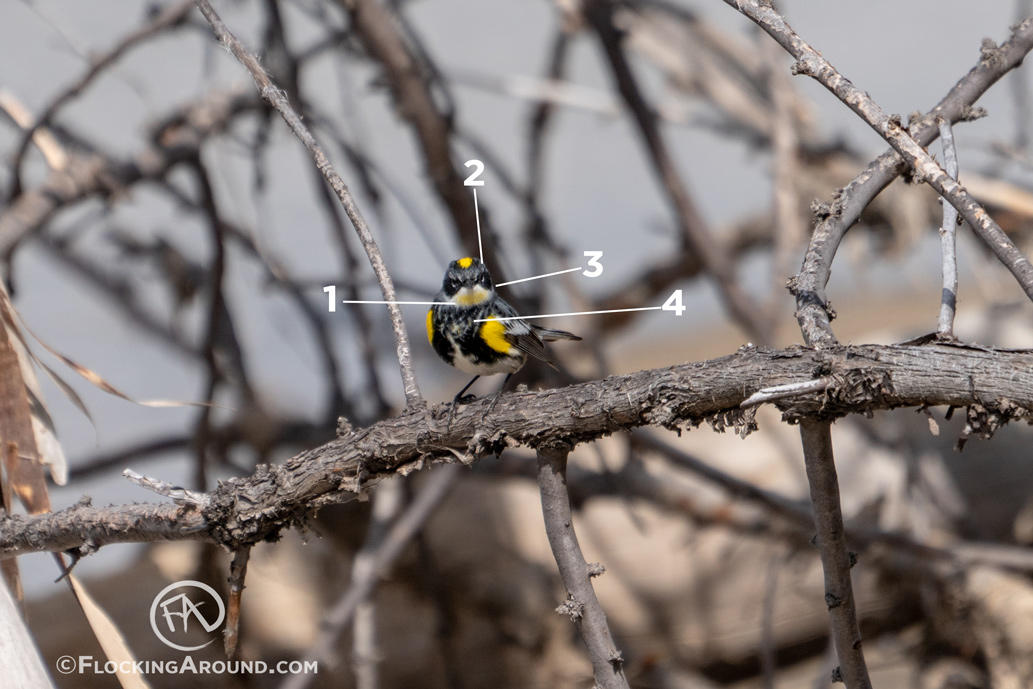
1. AUWA, MYWA, Intergrade, or YRWA?
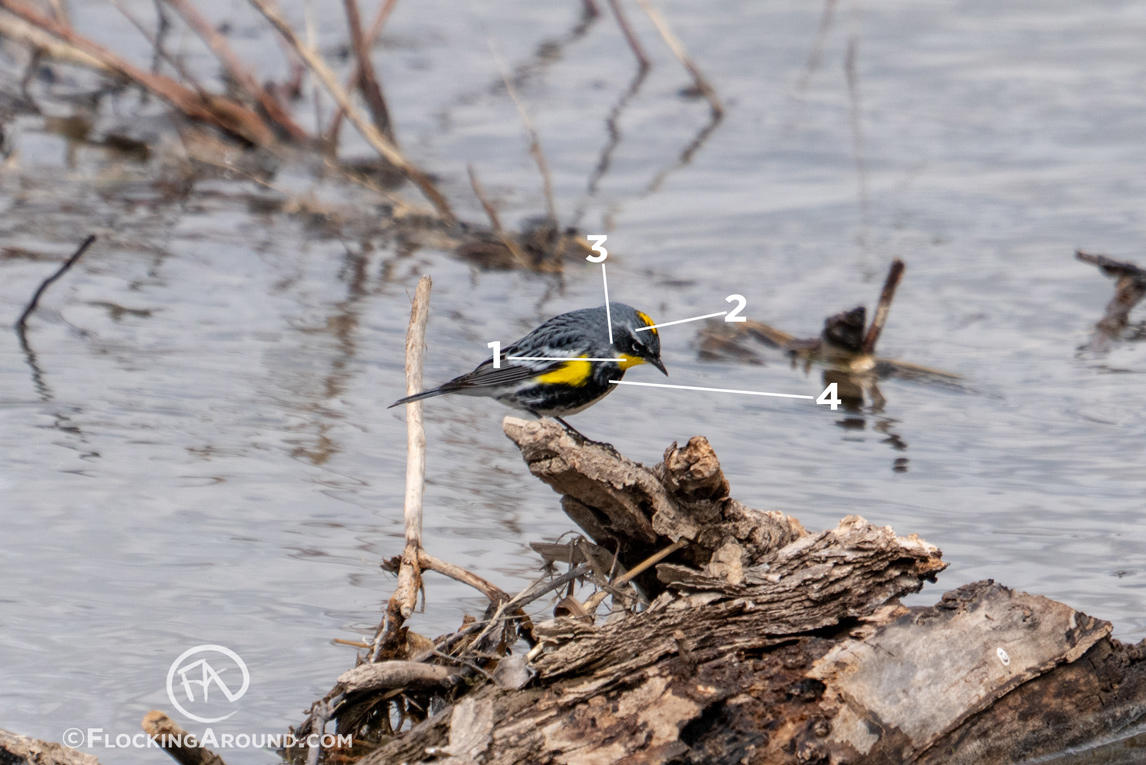
2. AUWA, MYWA, Intergrade, or YRWA?
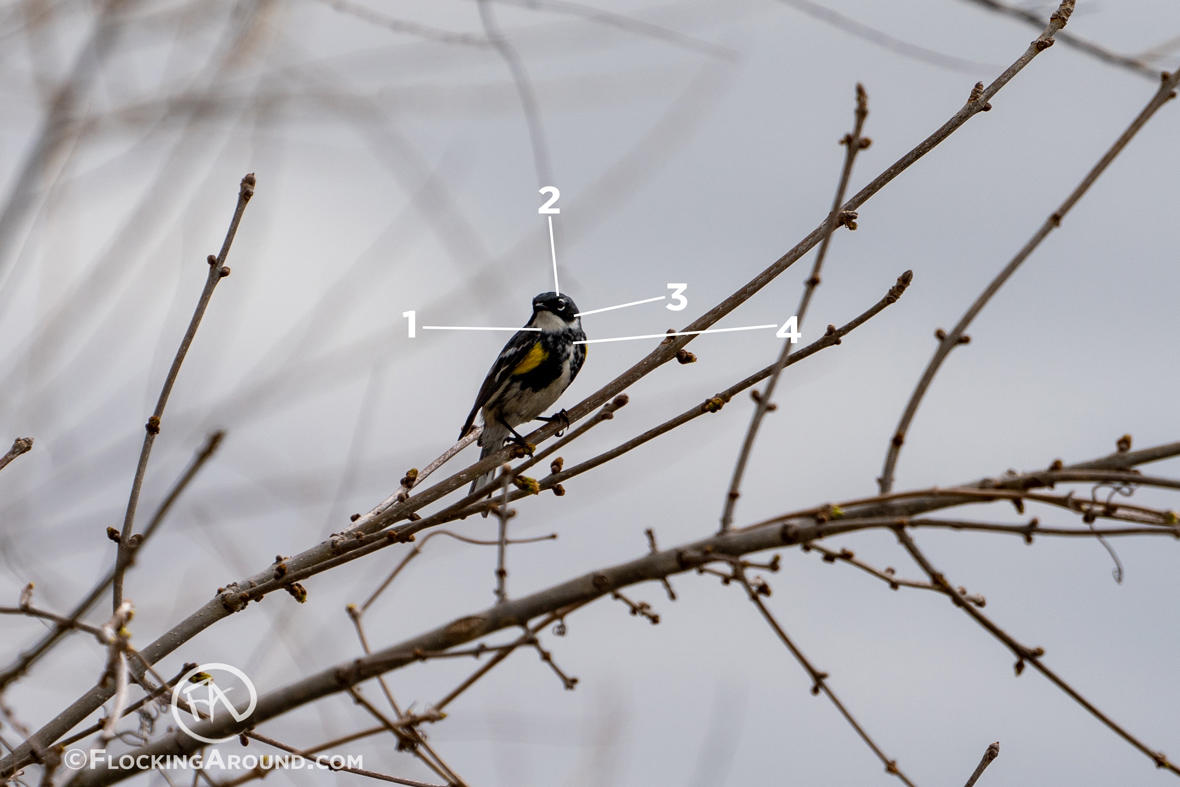
3. AUWA, MYWA, Intergrade, or YRWA?
Now for some photos with no help!
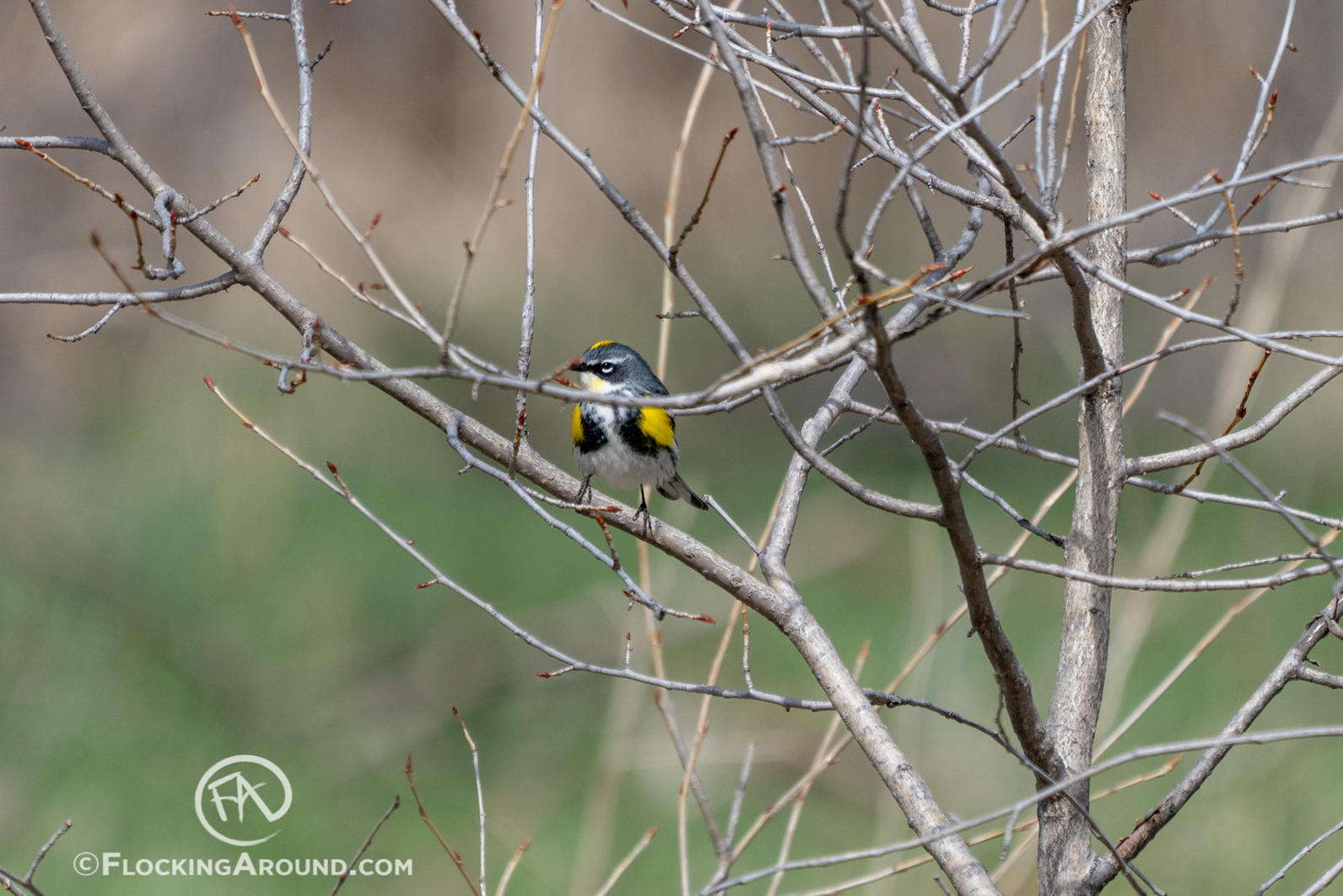
4. AUWA, MYWA, Intergrade, or YRWA?
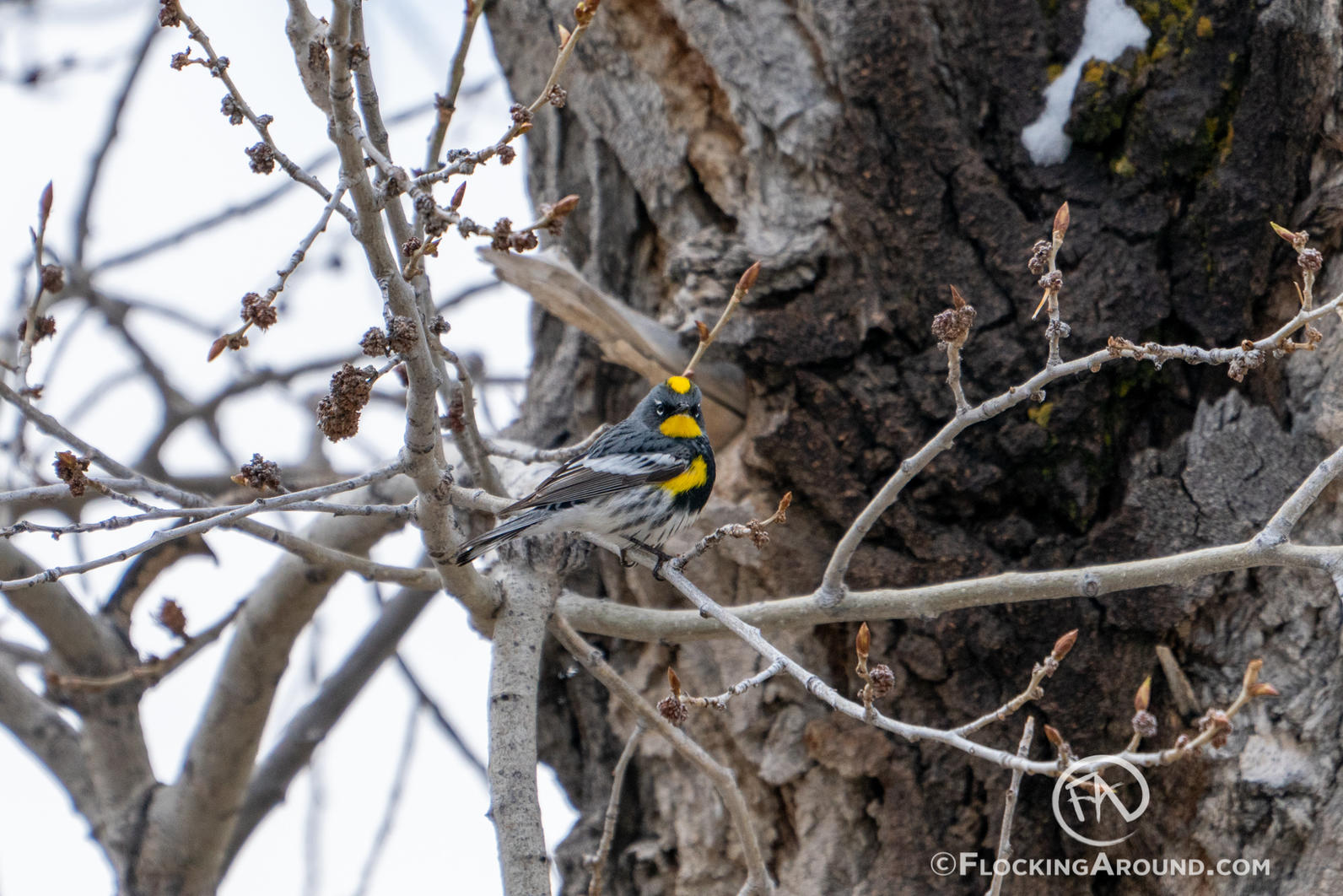
5. AUWA, MYWA, Intergrade, or YRWA?
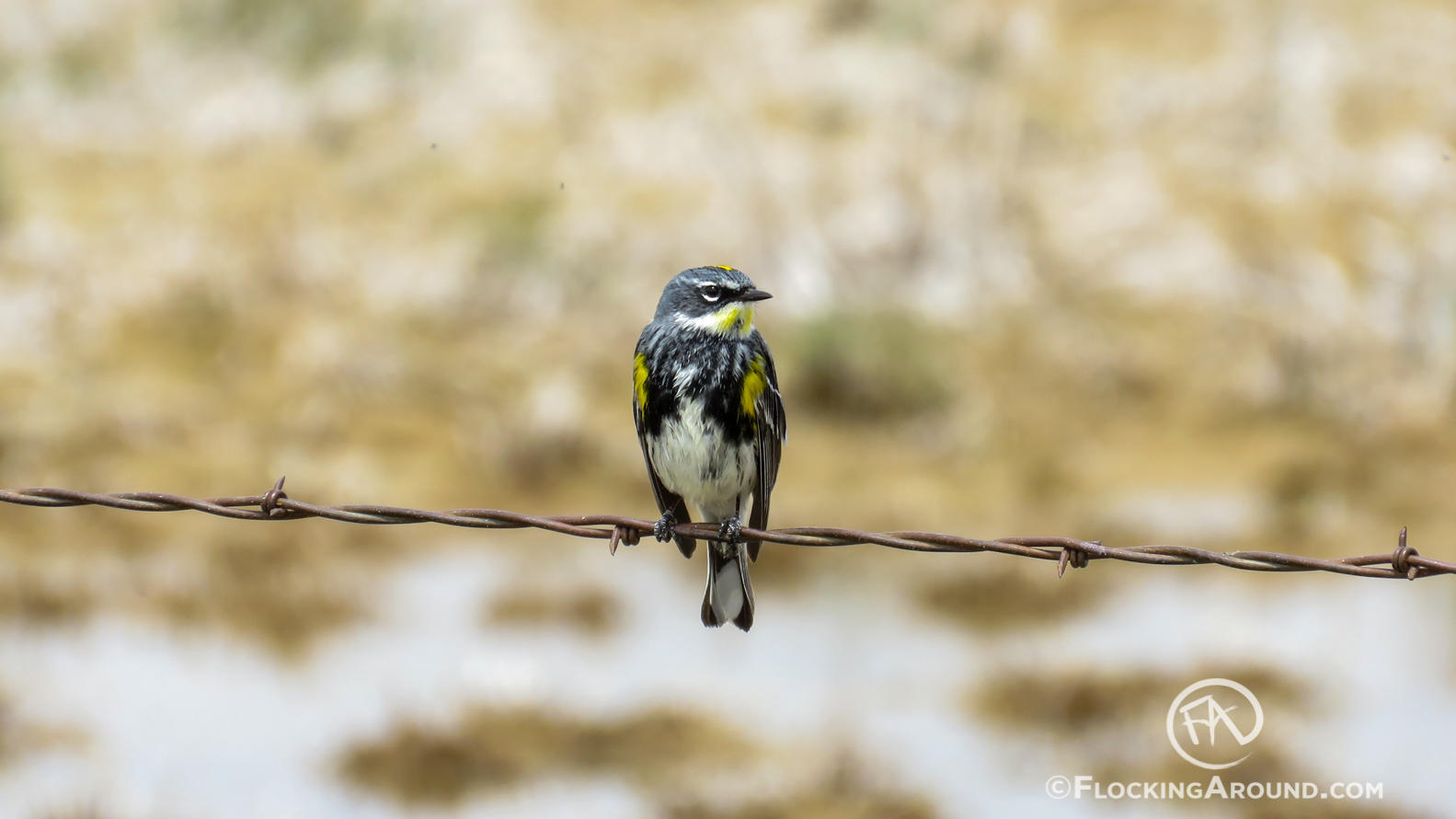
6. AUWA, MYWA, Intergrade, or YRWA?
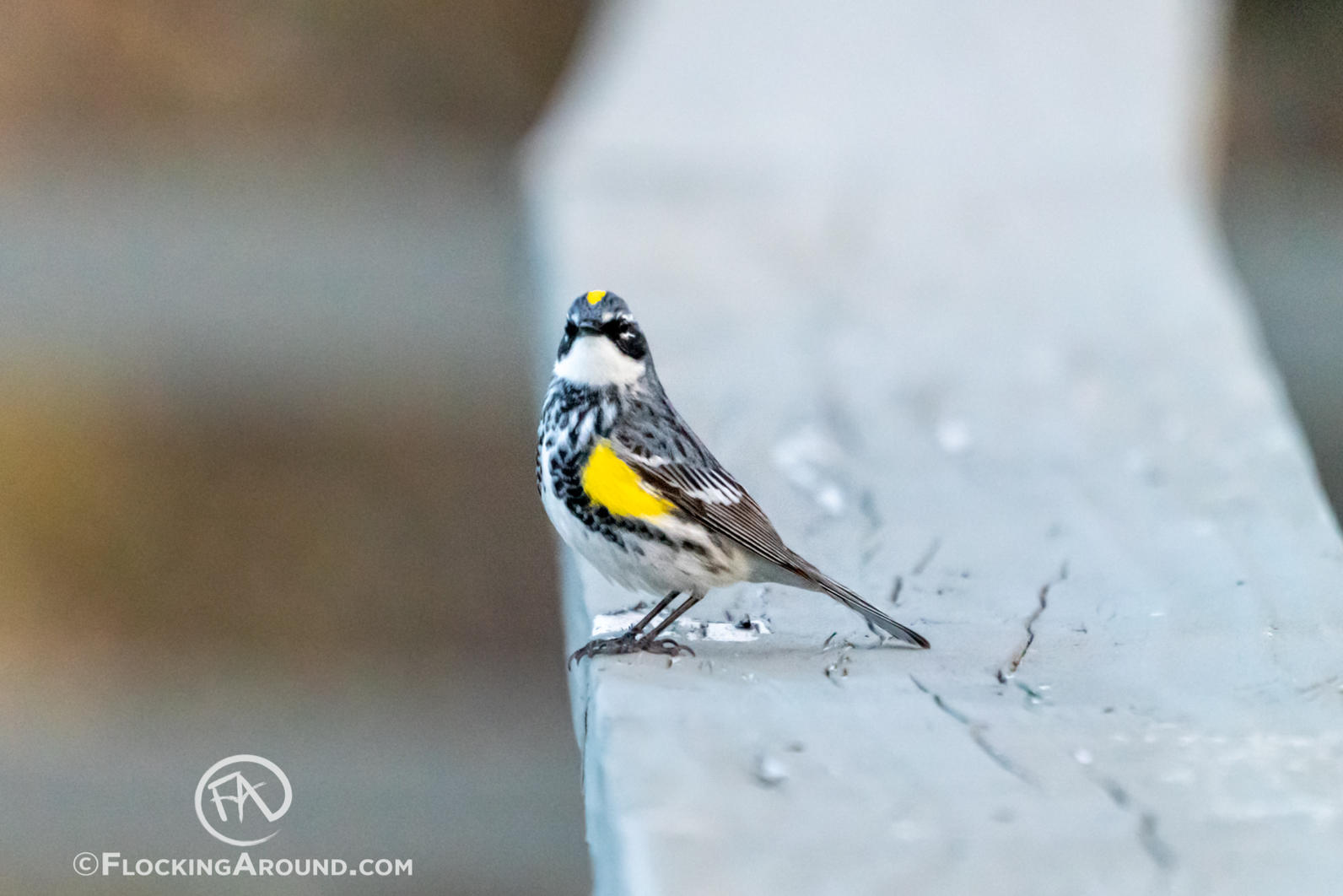
7. AUWA, MYWA, Intergrade, or YRWA?
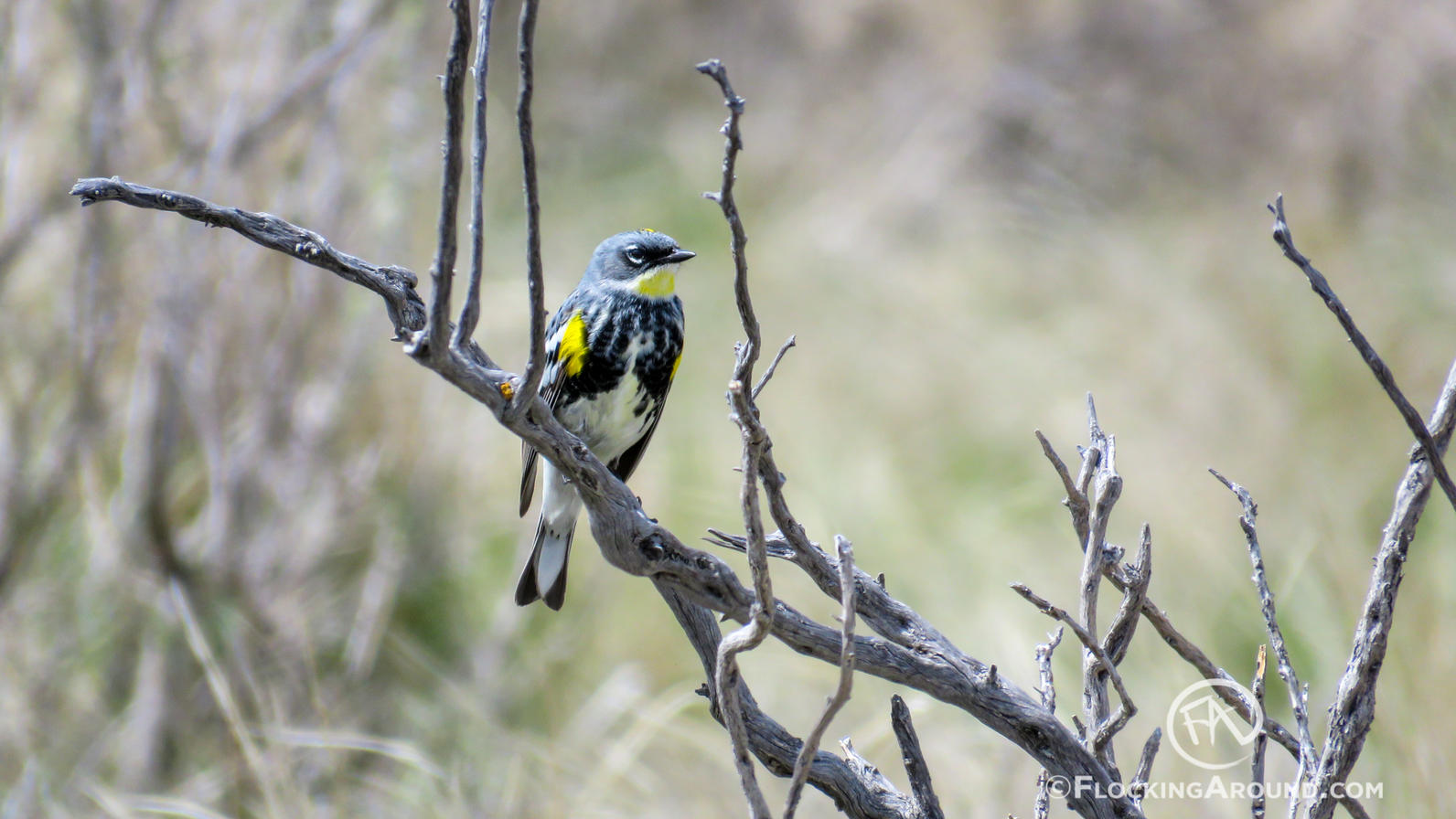
8. AUWA, MYWA, Intergrade, or YRWA?
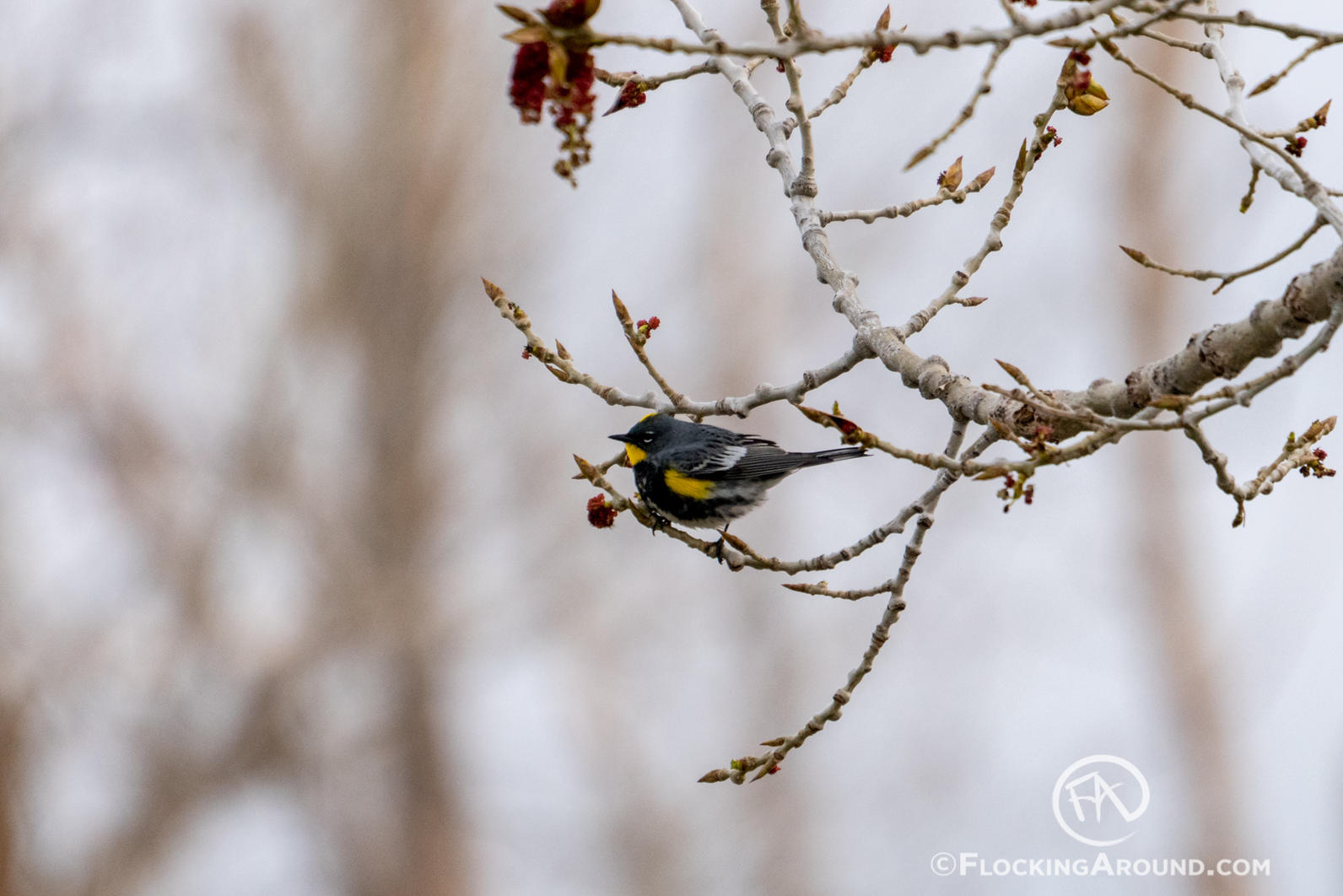
9. AUWA, MYWA, Intergrade, or YRWA?
Answers to Quiz:
1. Intergrade
2. Intergrade
3. MYWA (I would not argue against an intergrade on this bird. There may be a faint amount of yellow, and the white supercilium is limited.)
4. Intergrade
5. AUWA
6. Intergrade
7. MYWA
8. Intergrade
9. AUWA
*Final Note: This all may be irrelevant very soon. There is a lot of work being done that may lead to a split of the Yellow-rumped Warbler into 3+ species. But thanks for reading anyway...
You can read more of Zach’s identification posts on his website, Instagram, or Facebook. If you have skills in writing and/or photography and would like to contribute to our blog, send an email to evan.barrientos@audubon.org.


